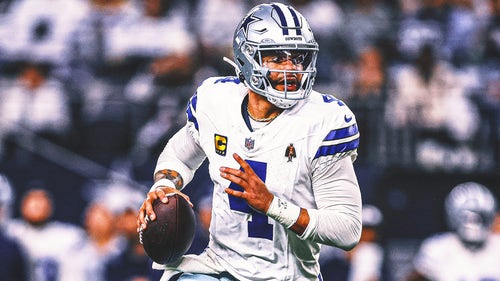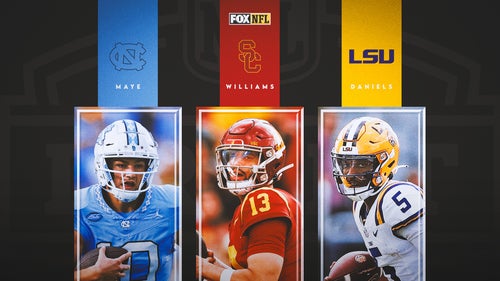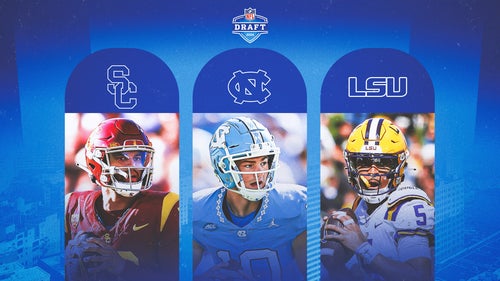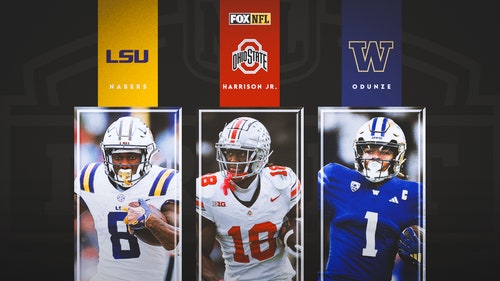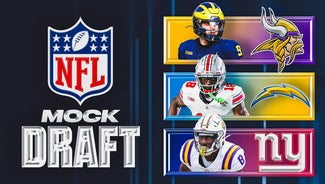
5 Reasons Dallas Cowboys Can Win Super Bowl 51
There are two 7-1 teams in the NFL right now. One of them is the New England Patriots. The other: the Dallas Cowboys.
When we learned that Tony Romo would miss a significant portion of the 2016 regular season, we worried that the 2016 Dallas Cowboys would be just as disappointing as the 2015 version of this team. After being one of the league’s best outfits in 2014, the Cowboys were a lost cause last year due to major injuries to Romo and star wide receiver Dez Bryant.
This year, Bryant missed some time (he’s back now and as good as ever), and Romo still hasn’t taken the field. And yet, the Cowboys are clearly the best team in the NFC and look even more formidable than they did in 2014 with MVP candidates Romo and DeMarco Murray leading the way.
Right now, the Cowboys are buoyed by the rookie duo of Dak Prescott and Ezekiel Elliott. Considering how high the Cowboys selected Elliott, the former Ohio State superstar’s emergence as a top back isn’t that surprising. But who could have seen Prescott immediately knocking on the door of being a top-10 NFL quarterback?
The Cowboys have no pass rush and some question marks on defense. And I’m sure some find it difficult to get behind this team as a Super Bowl contender, given their past failures. However, here are five reasons why you should believe that the Cowboys have a shot at winning Super Bowl 51.
Oct 30, 2016; Arlington, TX, USA; Dallas Cowboys running back Ezekiel Elliott (21) runs with the ball towards the pylon in overtime against Philadelphia Eagles cornerback Jalen Mills (31) at AT&T Stadium. Mandatory Credit: Matthew Emmons-USA TODAY Sports
The Running Game Is Just That Good
The fact that the Dallas Cowboys have one of the best offensive lines in NFL history is a big reason why Ezekiel Elliott is enjoying a season in which he is on pace for nearly 1,800 rushing yards. But if the offensive line were solely responsible for Elliott’s success, how come Alfred Morris, who has shown on multiple occasions that he can put up gaudy rushing totals as a lead back, is averaging just 3.6 yards per carry in comparison to Elliott’s 5.0?
More from NFL Spin Zone
Elliott may not be as much of a powerhouse as Todd Gurley or David Johnson, but there’s something ingenious about the way he understands the game. He has DeMarco Murray’s industry, Adrian Peterson‘s savvy, and Steven Jackson‘s toughness.
You know how Michael Thomas runs routes with little wasted motion? His former teammate in Elliott shows the same deliberateness when he runs. He gets straight to the point, he runs it down your throat, and he makes first contact utterly meaningless.
The Cowboys lead the league in rushing attempts, rushing yards, and rushing touchdowns. Defenses know exactly what they are going to do; the Cowboys will slam Elliott in between the tackles with reckless abandon. It doesn’t matter one bit, because the Cowboys still average 4.8 yards per pop on the ground.
This allows them to control games, move the chains, and set up better passing opportunities for Prescott. In Terrance Williams and Dez Bryant, the Cowboys have two wide receivers perfectly capable of threatening defensive backs on the outside, and this is a lethal hazard when combined with Elliott.
Oct 16, 2016; Green Bay, WI, USA; Dallas Cowboys wide receiver Cole Beasley (11) celebrates after scoring a touchdown during the first quarter against the Green Bay Packers at Lambeau Field. Mandatory Credit: Jeff Hanisch-USA TODAY Sports
Don’t Sell Passing Game Short
I like to preach the importance of having a well-rounded cadre of receivers, because most quarterbacks and offenses operate best when players of different skill-sets come together. The Cowboys mix is almost perfect. Their missing piece has been found with Cole Beasley’s emergence as one of the best slot receivers in the game. Seriously, he’s been that good with Prescott, who loves targeting him. Beasley has always been a solid player, but he’s been the Cowboys best receiver this season.
A large part of that is due to the time Bryant’s missed, but Beasley’s improvement has been noticeable. He leads the team with 43 receptions, 62.4 yards per game, and an 82.7 percent catch rate. Beasley’s also averaged 11.6 yards per reception, which is more than most slot receivers. Just compare his numbers to Julian Edelman‘s, who’s averaging only 8.7 yards per reception with a 66.1 percent catch rate.
Then you have Dez operating as one of the best “X” receivers in the game, Williams stretching the field, and Jason Witten as a bigger safety valve over the middle. This hasn’t been Witten’s best season as a receiver or blocker, but his 100-yard display against the Cleveland Browns is a reminder that he’s still pretty darn good.
Throw in Elliott as a capable receiving back and Brice Butler as a quality No. 4 and red zone option, and you can see why the Cowboys passing attack is third in the NFL in net yards per pass attempt.
Nov 6, 2016; Cleveland, OH, USA; Dallas Cowboys quarterback Dak Prescott (4) looks to pass against the Cleveland Browns in the first half at FirstEnergy Stadium. Mandatory Credit: Aaron Doster-USA TODAY Sports
Everything Dak Brings To The Table
We know the Dallas Cowboys are in good hands with Tony Romo at quarterback, because he’s one of the most prolific passers of the last decade. However, it’s not a fluke that the Cowboys are playing at a high level with Prescott under center, because he fits perfectly with their current offensive philosophy.
If you want to win games by running the ball more often than any other team in the league, then you had better avoid turnovers. Prescott has been one of the least mistake-prone quarterbacks in the NFL and it’s extremely rare to see a rookie with that level of maturity.
Through eight starts, Prescott has thrown 12 touchdowns to just two interceptions. He throws a pick on less than one percent of his throws, which is a huge factor as to why the Cowboys have the fifth-fewest turnovers in the NFL. It is critical for the Cowboys to avoid turning the ball over, because this defense just isn’t dynamic enough to make enough big plays to offset that. We’re not talking about the Seattle Seahawks or Minnesota Vikings here.
Additionally, Prescott is able to maintain accuracy while still challenging defenses. He completes 66.5 percent of his passes and his average of 8.1 yards per pass attempt is good for fourth in the NFL. As for QB rating, only Tom Brady, Matt Ryan, and Drew Brees best Prescott in that regard.
Rushing ability can be brought up when discussing Prescott’s impact on offense, but it is important to keep the numbers in context. Prescott’s average of four yards per carry is subpar for a quarterback and he runs the ball less frequently than the likes of Andrew Luck, Blaine Gabbert, Blake Bortles, and Marcus Mariota.
The key stat here, though, is his four touchdowns. When things get difficult, Prescott can pull a key first down or score by taking off. He’s obviously a pass-first quarterback who excels throwing the ball, particularly when it comes to spreading the ball amongst a variety of weapons. His rushing ability is a nice secret weapon, though, because it can be lethal in critical areas. In fact, Prescott leads all quarterbacks with four rushing touchdowns (Cam Newton and Tyrod Taylor have three apiece).
Oct 2, 2016; Santa Clara, CA, USA; Dallas Cowboys cornerback Morris Claiborne (24) intercepts the ball during the fourth quarter against the San Francisco 49ers at Levi
Outperforming Expectations on Defense
No offense in the NFL has been more compelling than the Dallas Cowboys unit this season, but the defense deserves some recognition for greatly exceeding expectations. Most fans rightfully expected a defense bereft of a legitimate edge rush to fail miserably, but the Cowboys have been a clear-cut, top-10 defense statistically.
Dallas is fourth in points allowed per game and they are also 10th in yards allowed per game. Maybe this is all just a mirage, but the fact that their defense has been disciplined and stout is a huge development.
Even if you think their overall success on defense is a fluke, you can’t deny how well this secondary has played. The Cowboys defensive backs have quietly been among the best in the NFL. Byron Jones has already arrived, Barry Church is an excellent strong safety, Morris Claiborne is actually good, and the rest of the cornerbacks have been solid when called upon.
The Cowboys lead the league with a +21 big play differential (Sporting Charts). Most of this is due to Elliott’s big runs, but it takes a defense that avoids giving up big plays to boost a team to No. 1 in this stat. The Cowboys haven’t broken down on defense, but they are lucky that they haven’t been tested much by opposing defenses this season. In Week 10, a healthy Ben Roethlisberger beckons, so we will get to see what this pass defense is made of against the Pittsburgh Steelers offense.
Oct 16, 2016; Green Bay, WI, USA; Dallas Cowboys safety Byron Jones (31) knocks away a pass intended for Green Bay Packers wide receiver Randall Cobb (18 ) in the second quarter at Lambeau Field. Mandatory Credit: Benny Sieu-USA TODAY Sports
Smart Pass Defense
The Cowboys know they don’t have a good pass rush and it could come back to haunt them later in the season. However, they have found enough ways to manufacture enough pressure to sit at 16th in the league table with 18 sacks.
More importantly, they have created a gameplan on defense that minimizes the amount of big plays they allow and matches their identity on offense. The Cowboys like to control the ball and the flow of the game with their rushing attack, so it makes sense for them to avoid getting into shootouts.
A good way to do this is to limit big plays and give the opposition easy throws. Eventually, the opposing offense will stall or make a mistake. The Cowboys lead the league in average drive length on offense and are in the middle-of-the-pack with 10 turnovers (15th in the NFL), so it is working so far.
Dallas is one of only two teams that allows over 70 percent of the passes thrown against them to be completed. Usually, as this year’s Detroit Lions can attest, this is a recipe for disaster. However, the Cowboys allow just 10.1 yards per reception, good for second in the league. They are fine with giving up receptions, but they do not surrender big plays and are somehow 12th in the league in first downs allowed despite the high completion percentage allowed.
A key to this strategy remaining successful is tackling. The Cowboys are eighth in the NFL in yards after the catch allowed per game, and this will need to continue. Basically, there are two ways to give up big plays as a passing offense—surrendering deep passes or allowing receivers to gash you after the catch. Only four teams have allowed less 25+ yard passes than the Cowboys, highlighting that this strategy is working.
This article originally appeared on









































































































































